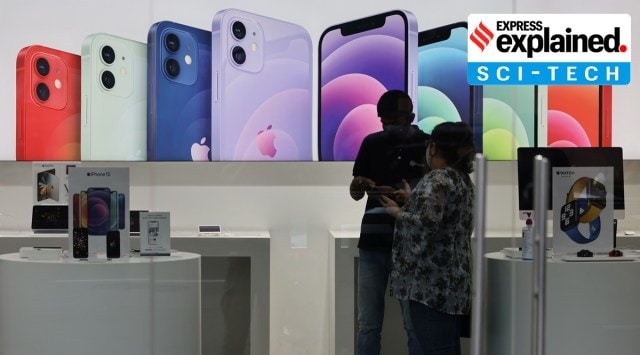
It all started when top Apple analyst Ming-Chi Kuo said the iPhone 13 will support low-orbit satellite communication, a report corroborated by a Bloomberg report. The Bloomberg report said the ‘iPhone 13’ will come with satellite communication capabilities, but limited to emergency calls and texts when the phone signal is not available. In theory, this would mean that those with the new iPhone would be able to send messages and make calls using satellite networks. Kuo claimed Apple’s next-generation iPhone 13 will feature a low-earth-orbit (LEO) satellite communication mode.
What does Low Earth Orbit (LEO) mean?
Low earth orbit (LEO) satellites operate 311 miles (roughly 500 kilometers) above the Earth’s surface. There are hundreds of satellites that move around at this height. Because they are closer to the earth’s surface, unlike traditional satellites that are stationed higher at roughly 36,000 km, the time needed for data to be sent and returned is shorter. This lower latency is why everyone from OneWeb backed by Sunil Bharti Mittal to Elon Musk’s Starlink are banking on such satellites to beam down high-speed internet service to remote parts of the world.
 What is a satellite phone?
What is a satellite phone?
The concept of a satellite phone is not new. In fact, the first satellite phone was launched by Motorola in 1989. A satellite phone, or satphone as it is commonly called, works by connecting to a telecommunications satellite in space. What makes a satellite phone different from current smartphones is that they are capable of receiving and making calls anywhere in the world, even in the remotest parts be it the Himalayas or an uninhabited island in the Pacific. Instead of depending on a GSM network, they are tied to a satellite company. Satellite phones are commonly available in the US market at different price points. Garmin inReach, for instance, has a built-in satellite receiver that lets you send and receive SMS via the Iridium network. Thuraya X5-Touch, meanwhile, is a ruggedised Android-powered smartphone with support for GSM/LTE networks as well.
One common thing about satellite phones is that they have an outer antenna system to catch signals. This means they don’t look like a modern smartphone, where the antenna is placed along with the phone’s metal frame.
How will Apple add satellite communications to the iPhone 13?
What is being speculated is that the iPhone 13 will use a modified Qualcomm X60 baseband chip which going to be the X65 5G modem for the rest of the smartphone market. But even if Apple uses a custom modem from Qualcomm, the company has to have a tie-up with satellite Internet service providers like Inmarsat, Iridium, Thuraya, or Globalstar. Kuo believes Apple will reportedly use Globalstar’s satellite constellation, where the coverage is only limited to North and South America, Europe and northern Asia, Russia and Australia.
Story continues below this ad
… but Globalstar has a tie-up with Qualcomm
Globalstar has been working with Qualcomm for a while now and earlier this year the two companies announced the former’s n53 band in Qualcomm’s X65 modem. Simply put, Globalstar’s n53 band has support for 5G NR, or New Radio. It is impossible for Apple to add an external antenna on top of the next iPhone. But what is a very likely possibility is that Apple switches to n53 for improving the iPhone 13’s 5G support capability.
Will this work smoothly?
The point to be highlighted here is that satellite data speeds are super slow, plus the iPhone’s lack of an external antenna could be a hindrance. Plus, satellite plans aren’t cheap as they cost hundreds of dollars a year. Even if the iPhone 13 is a satellite phone, it would become a USP. The audience for a satellite phone is still completely niche
Does Apple have ambitions to compete with Starlink?
There have been reports earlier that the Tim Cook-led company may be interested in satellites. Back in 2019, Bloomberg’s Mark Gurman reported that Apple had hired a “top secret team” working on internet satellites. We haven’t seen an outcome of that team yet nor has Apple ever admitted to any such product. If Apple is seriously looking at this space, the company might not compete with Musk’s Starlink. Instead, Apple would want to use the low-earth-orbit (LEO) satellite communication mode to improve maps, better connectivity within its devices, and possibly a way to add network capabilities on future products, including the rumoured AR/VR headset and the Apple Car.
Story continues below this ad
Newsletter | Click to get the day’s best explainers in your inbox









































